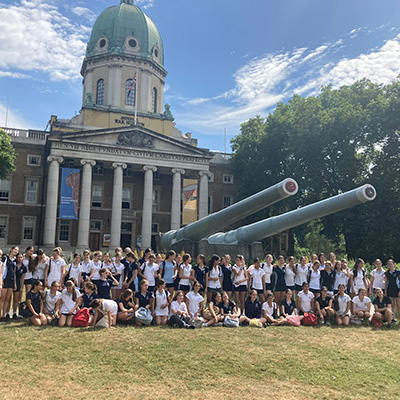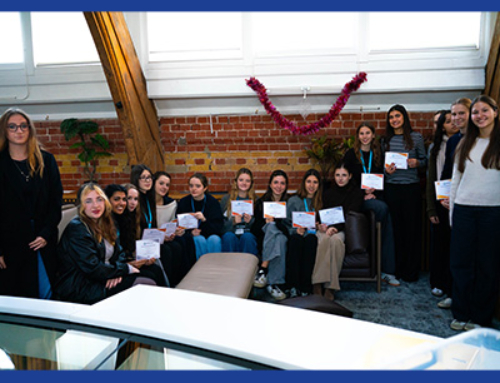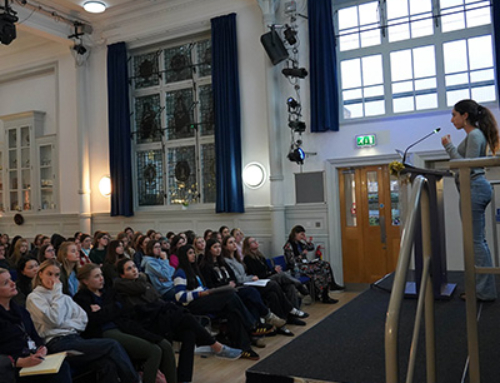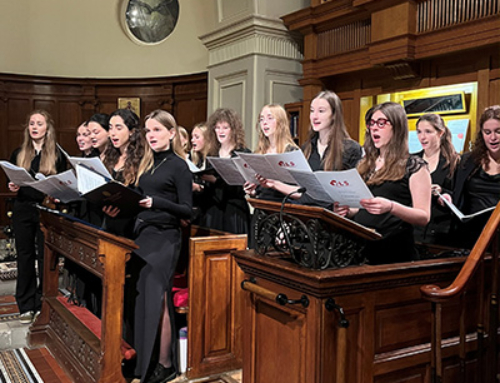This week the Year 9s experienced a thought-provoking trip to the Imperial War Museum. This visit formed a key part of their History curriculum, enhancing their understanding of World War I, World War II and the Holocaust. It was day filled with active learning, reflection and emotional connection to the past.
The main focus of the day was museum-led session on the Holocaust. Led by expert educators, this workshop provided students with a sensitive and engaging introduction to one of most tragic periods in modern History. Through survivor testimonies, personal artefacts, and guided discussion, students explored how ordinary people were affected by extraordinary events. They were encouraged to reflect not only on the scale of the atrocity, but also the stories behind the statistics. The year 9s approached the exhibition with remarkable maturity, asking thoughtful questions and showing genuine empathy and respect throughout. It was clear the exhibition made a lasting impact, and we are incredibly proud of the way they approached the session in such a dignified and compassionate manner.
In addition to the Holocaust session, students toured the World War I and II galleries. The girls listened to soldiers’ personal accounts and examined many weapons including a Howitzer, a V2 rocket, and a spitfire. These exhibitions were rich with original artefacts and immersive displays which brought the wars to life. From climbing into Anderson shelters to examining the stranger aspects of war, such as a gerbil that was sent from a British soldier, who was in the trenches in Iraq, to his sister back home as a practical joke. Pupils saw firsthand how warfare evolved, how it impacted civilians, and how the world responded to a global conflict.
Pupil reflection by Summer:
“Visiting the Imperial War Museum was a really powerful and emotional experience. The Holocaust gallery in particular stood out to me—it was deeply moving and thought-provoking. Seeing the personal stories, artefacts, and photos made the horrors of the Holocaust feel very real, and I left with a much stronger understanding of just how devastating it was. I also found the World War II section incredibly informative. It helped me connect the facts we’ve learned in class with real-life experiences, from soldiers on the front line to civilians at home. One part that really stuck with me was the replica room of a typical house during World War II. I remember seeing the Morrison bunker in the middle of the living room, and it was strange to imagine eating dinner or doing homework right next to something designed to protect you from bombs. It really helped me understand what everyday life must have felt like during the war, constantly living with that kind of fear.”
Miss Wadham, History Teacher














